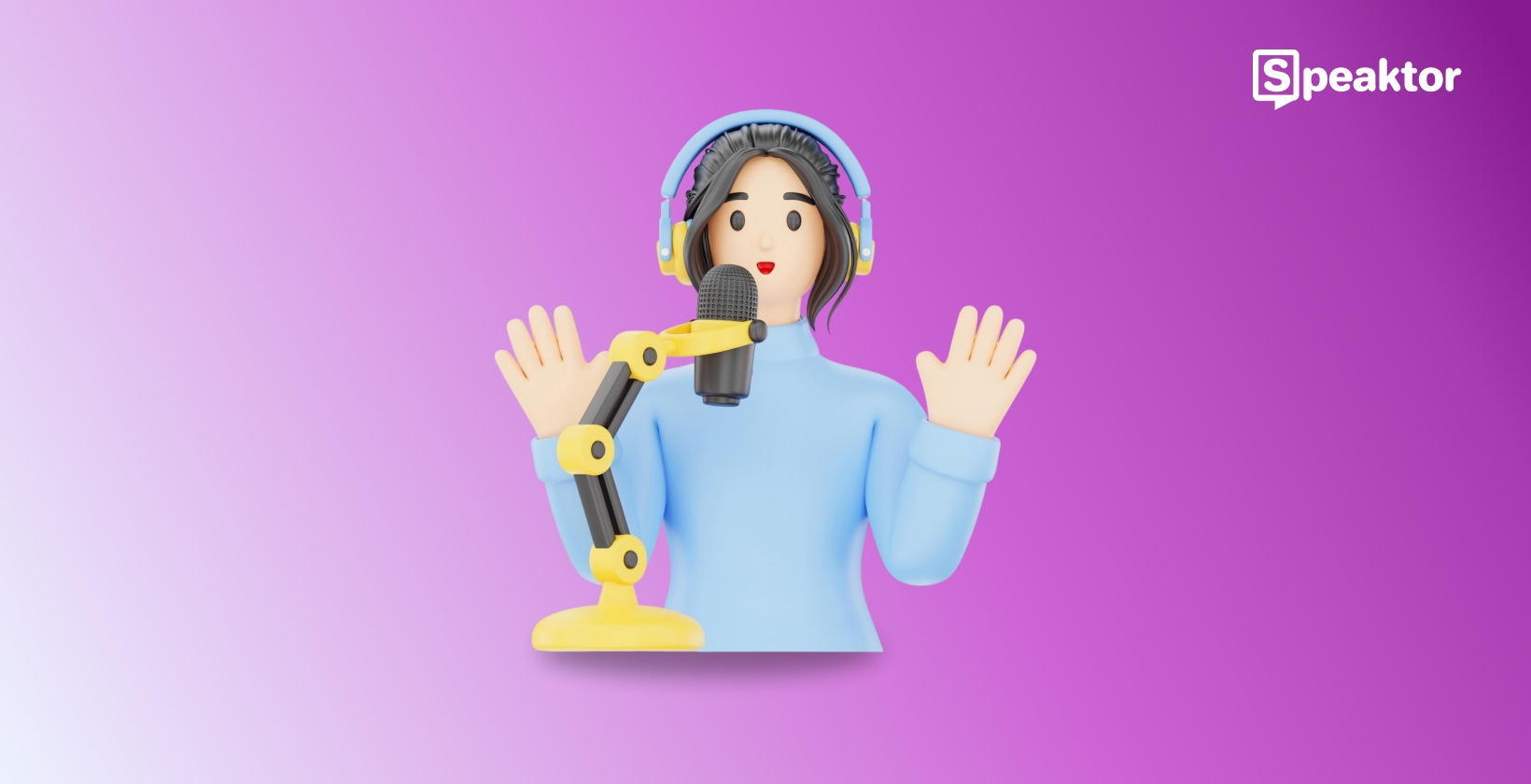
The End of Voice Acting: Will AI Replace Voice Actors?
Table of Contents
- How Is Voice Acting Evolving in the Digital Age?
- How Does AI Voice Generation Technology Work?
- What Impact Does AI Have on the Voice Acting Profession?
- How Do Professional Voice Overs Compare to AI-Generated Speech?
- What Does the Future Hold for Voice Talent in an AI-Dominated Landscape?
- AI Voice Generator Tools: Which Options Provide the Best Voice Quality?
- How Can Content Creators Implement AI Voice Generation Effectively?
- Conclusion
Transcribe, Translate & Summarize in Seconds
Table of Contents
- How Is Voice Acting Evolving in the Digital Age?
- How Does AI Voice Generation Technology Work?
- What Impact Does AI Have on the Voice Acting Profession?
- How Do Professional Voice Overs Compare to AI-Generated Speech?
- What Does the Future Hold for Voice Talent in an AI-Dominated Landscape?
- AI Voice Generator Tools: Which Options Provide the Best Voice Quality?
- How Can Content Creators Implement AI Voice Generation Effectively?
- Conclusion
Transcribe, Translate & Summarize in Seconds
Voice acting transformation accelerates as artificial intelligence reshapes traditional voice production methods. AI voice generators provide efficient, cost-effective alternatives to conventional voice acting processes while addressing rising costs and time constraints, especially in the context of ai dubbing. The voice talent industry faces unprecedented change as synthetic voice technology advances, creating both challenges for established professionals and opportunities for innovation.
How Is Voice Acting Evolving in the Digital Age?
The voice acting profession has evolved significantly since its origins in early radio dramas. Voice actors once relied solely on their vocal talent to engage audiences through radio broadcasts and TV shows. As digital recording and distribution became widespread, the industry shifted to a more flexible, global market.
Recent technological advancements, such as AI and synthetic voice technology, have disrupted traditional voice production, raising new challenges. Rising costs, limited access, and time constraints continue to impact the voice acting profession. This trend forces industry professionals to adapt and innovative voice acting strategies continuously.
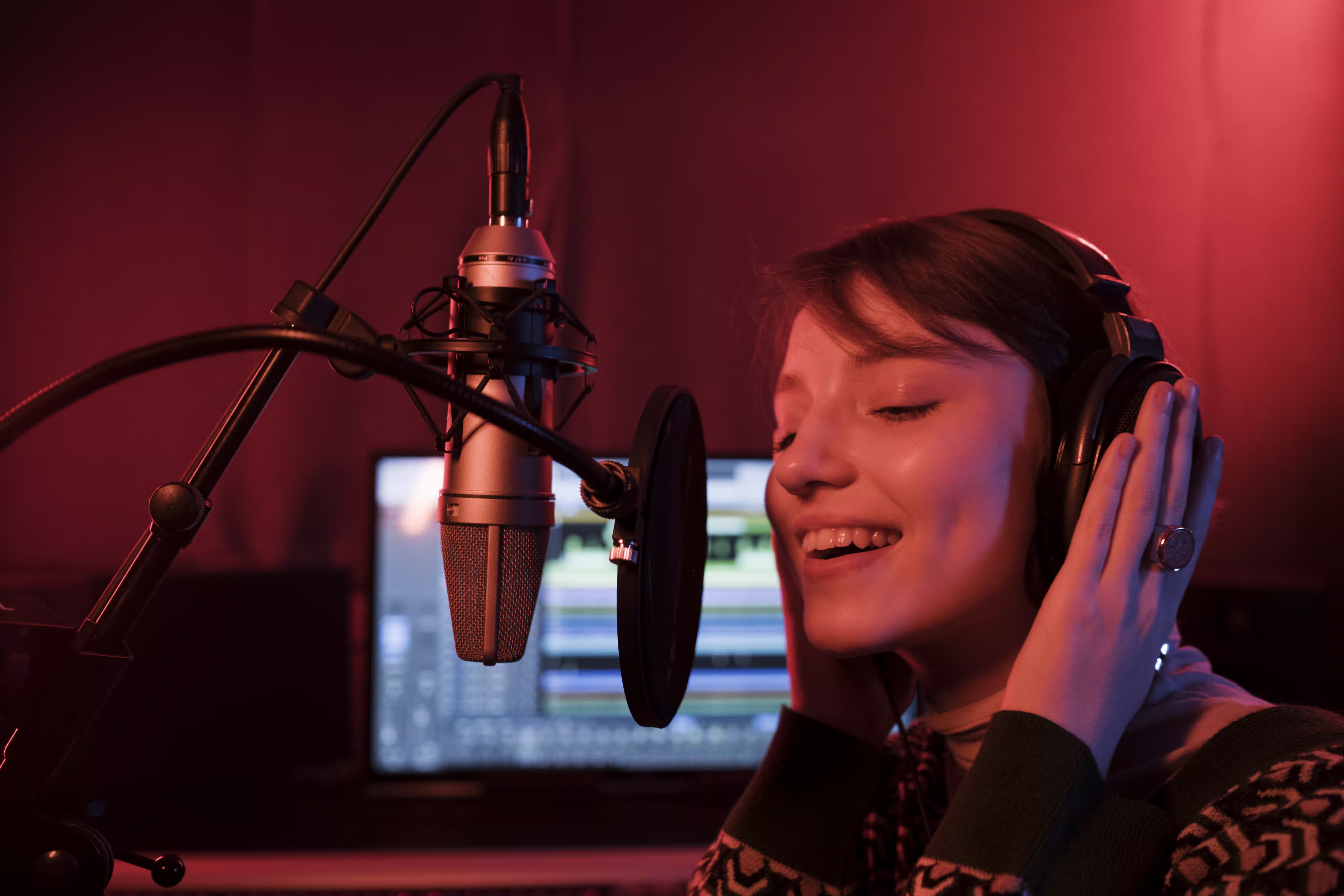
How Does AI Voice Generation Technology Work?
AI voice generation software transforms the voice talent industry by providing efficient and cost-effective voice production solutions. Text to speech technology advancements enable increasingly natural synthetic voice outputs for content creators across multiple platforms.
How Does Text-to-Speech Technology Operate?
Text-to-speech technology has progressed substantially beyond its primitive beginnings. Initial TTS systems generated robotic, monotone voices lacking warmth and human-like emotional qualities. Modern text to speech software implements advanced AI algorithms for converting written content into spoken words with improved intonation and rhythm. Despite these improvements, current systems still lack complete emotional depth and struggle to fully capture human speech nuances that professional voice actors deliver naturally.
What Is the Current State of Voice Synthesis Software?
Current-state voice synthesis software utilizes neural networks and machine learning algorithms to generate realistic voice outputs. By analyzing vast amounts of speech data, these AI voice generation systems mimic human speech patterns effectively. The software produces synthetic voices increasingly similar to human voice actors in quality and clarity. While AI voice actors excel in consistency and speed, the emotional delivery capabilities remain limited compared to human voice talent performances. This performance gap highlights the continued necessity for human voice talent in emotionally complex narration contexts.
What Impact Does AI Have on the Voice Acting Profession?
Digital voice cloning creates both negative and positive consequences for the voice acting profession across multiple sectors. The technology transforms traditional career paths while creating new opportunities for voice talent adaptation.
Which Voice Acting Roles Face Replacement Risk?
Routine voice work, such as background chatter and simple narration, increasingly shifts to automation through AI voice generators. Synthetic voice technology efficiently handles tasks like generating crowd noises, replacing multiple voice actor roles simultaneously. AI voice actors particularly excel in video game dialogue and customer service applications, where production speed and voice consistency represent key priorities over emotional depth.
What New Opportunities Exist for Voice Talent in the AI Era?
Voice licensing and "voice banking" emerge as innovative career opportunities for voice actors, enabling professionals to record and preserve their distinctive voices for future licensing. These approaches maintain performer control over digital voice presence while creating passive income streams. The growing AI in entertainment industry applications increases demand for voice direction and quality control specialists who oversee AI voice implementation. Specialized voice acting niches requiring emotional storytelling and complex character development resist automation due to the essential human emotional interpretation requirements.
How Do Professional Voice Overs Compare to AI-Generated Speech?
The voice-acting industry undergoes significant transformation as AI-generated speech increasingly competes with traditional human voiceovers. This comparison examines the strengths and limitations of both approaches regarding quality, emotional range, cost factors, and accessibility:
Quick Comparison: Professional vs. AI Voice Solutions
- Professional voice actors: Superior emotional range, natural inflection, creative interpretation
- AI voice generators: Lower cost, faster production, consistent outputs
- Human voice talent: Better for complex narratives, emotional content, brand representation
- Text to speech technology: Ideal for routine content, multilingual needs, scalable projects
- Voice synthesis software: Continues improving but lacks human nuance and creativity
How Do Quality and Emotional Range Compare?
AI voice actors deliver exceptional consistency and production speed but lack the emotional nuance and interpretive capabilities that human voice talent provides. Human voice performances capture subtle emotional variations, making professional voice overs essential for audio content requiring empathy, engagement, and emotional connection with audiences. While synthetic voice technology handles routine voice tasks efficiently, human voices remain irreplaceable for emotional depth in storytelling, character development, and persuasive marketing content.
What Cost and Accessibility Factors Influence Voice Production Decisions?
Professional voice actor hiring processes involve multiple production stages, including auditions, coaching, rehearsals, and post-production editing, making traditional voice production time-consuming and relatively expensive. AI voice generation tools offer significantly faster and more affordable voice production alternatives. Text to speech technology transforms voice content creation economics, enabling startups and independent creators to produce professional-quality audio content on limited budgets without sacrificing basic quality standards.

What Does the Future Hold for Voice Talent in an AI-Dominated Landscape?
The future of voice acting shows promising collaborative potential with balanced human-AI approaches. The evolving voice acting profession incorporates technological advancements while preserving essential human creative elements.
How Can Hybrid Approaches Combine Human and AI Voice Capabilities?
Hybrid approaches in the voice talent industry integrate human creativity with AI efficiency advantages, allowing voice actors to scale production capabilities and explore new creative possibilities. For example, AI voice generators handle preliminary voiceovers or repetitive dialogue elements, freeing human voice talent to focus on complex, emotionally nuanced performance aspects. This collaborative model maximizes the strengths of both human and synthetic voice technology while minimizing their respective limitations.
What Legal and Ethical Considerations Exist in Digital Voice Cloning?
According to research studies, digital voice cloning raises significant concerns regarding consent, ownership, and appropriate usage limitations. These ethical questions become particularly relevant in cases where AI voice technology recreates voices of deceased individuals for therapeutic or commercial purposes. Clear regulatory frameworks must establish ethical practice standards protecting voice talent and stakeholders from unauthorized voice reproduction while enabling legitimate innovation within the voice actor careers landscape.
AI Voice Generator Tools: Which Options Provide the Best Voice Quality?
Content creators seeking professional-grade voice outputs need reliable AI voice generation solutions that deliver natural-sounding results, and many consider using best AI voiceover tools for their projects. These text to speech tools offer varying capabilities for different voice production requirements and budgets.
Top AI Voice Generation Tools Overview
- Speaktor: Professional-grade AI voice generator with extensive language support and natural tone options
- Murf AI: Versatile text-to-speech platform with 200+ voices but higher pricing structure
- Speechify: Natural-sounding audio conversion with potential billing transparency issues
- WellSaid Labs: Enterprise-focused solution ideal for e-learning and marketing applications
- Play.ht: Comprehensive language and accent coverage with occasional audio quality inconsistencies
AI Voice Generator Tools Comparison Table
These AI voice generator tools provide various approaches to synthetic voice production, each offering specific advantages for different voice acting requirements.
Speaktor: Professional-Grade Voice Generation Solution
Speaktor represents an advanced AI-powered text to speech tool delivering exceptionally natural-sounding speech across more than 50 languages. The platform features 15+ human-like voice tones matching diverse content contexts effectively. Whether projects require professional voiceovers, audiobooks, or educational materials, Speaktor ensures realistic speech quality enhancing audience engagement with minimal artificial artifacts. The user-friendly interface design enables new users to begin voice production without extensive training.
Key Features:
- Multilingual Support with 50+ language options including German, French, Turkish, Spanish, and Arabic
- Voice Tone Selection offering 15+ distinct tone variations suitable for different content contexts
- Team Collaboration features enabling secure workspace sharing with role-based permissions
- Audio Control capabilities allowing precise speed adjustments for educational and marketing applications
- Multiple Export Options supporting WAV, MP3, WAV+SRT, and MP3+SRT format downloads
Pros:
- Exceptional natural voice quality with minimal robotic artifacts
- Extensive language support for global content creation
- Intuitive user interface requiring minimal learning curve
- Flexible export options supporting multiple audio formats
- Competitive pricing structure compared to similar solutions
Cons:
- Limited voice variety compared to premium competitors
- Occasional pronunciation challenges with technical terminology
- More advanced editing features require higher tier subscriptions
- Processing time increases with longer content pieces
- Limited integration options with third-party platforms
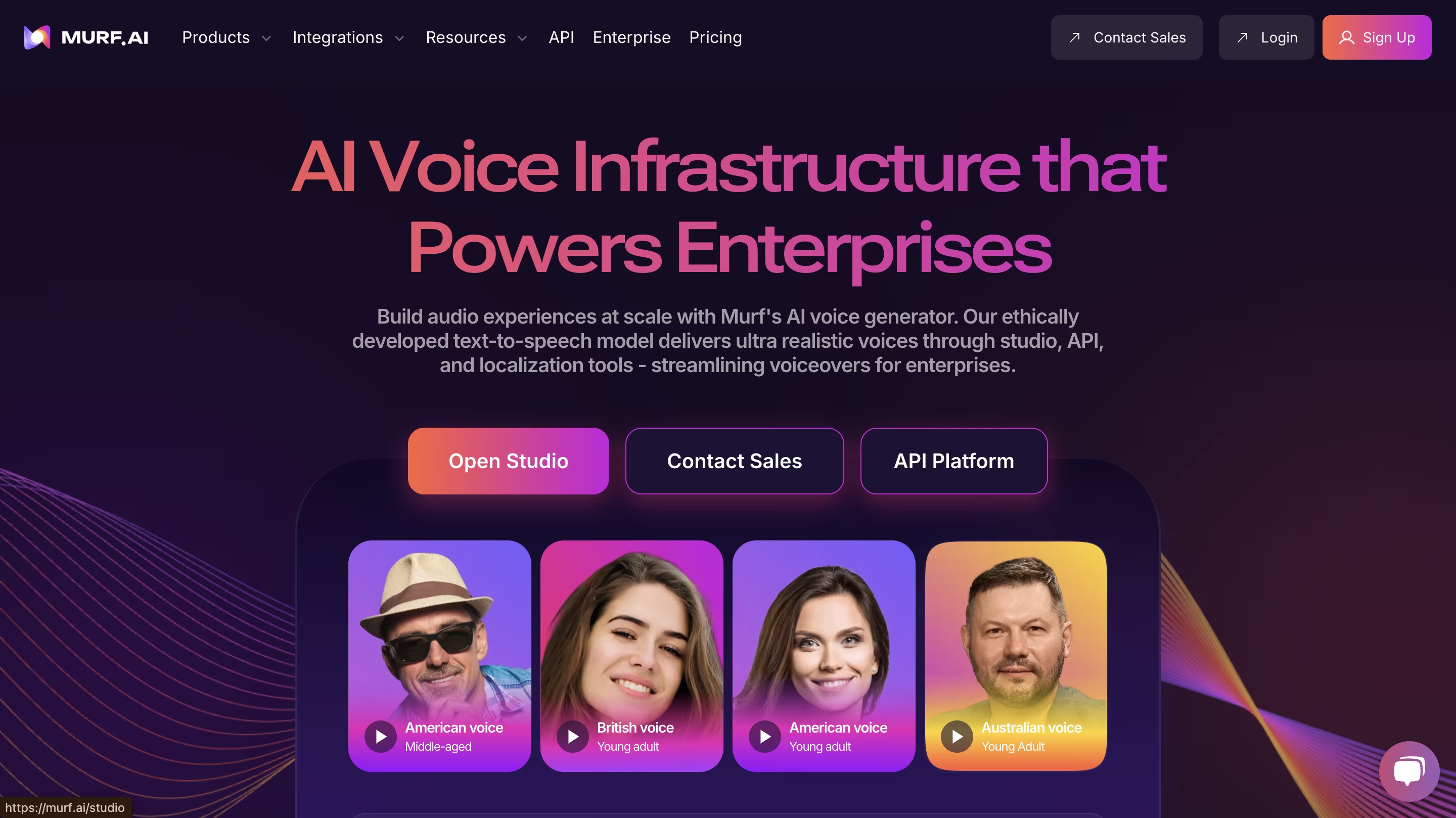
Murf AI: Comprehensive Voice Customization Platform
Murf AI provides a versatile text-to-speech platform featuring over 200 voice options across 20+ languages. The system enables quick voiceover production with extensive customization capabilities for professional results. Integration with popular design tools like Canva and Adobe Audition enhances content creation workflows significantly. However, the advanced feature set commands premium pricing that may exceed budget constraints for smaller organizations or independent creators.
Pros:
- Extensive voice library with 200+ natural-sounding options
- Advanced customization features for professional voice production
- Seamless integration with popular design and audio editing tools
- High-quality output suitable for commercial applications
- Collaborative workspace features for team environments
Cons:
- Premium pricing structure beyond reach for some independent creators
- Learning curve for accessing advanced features effectively
- Occasional processing delays during peak usage periods
- Limited free tier functionality compared to competitors
- Additional charges for high-volume voice generation projects
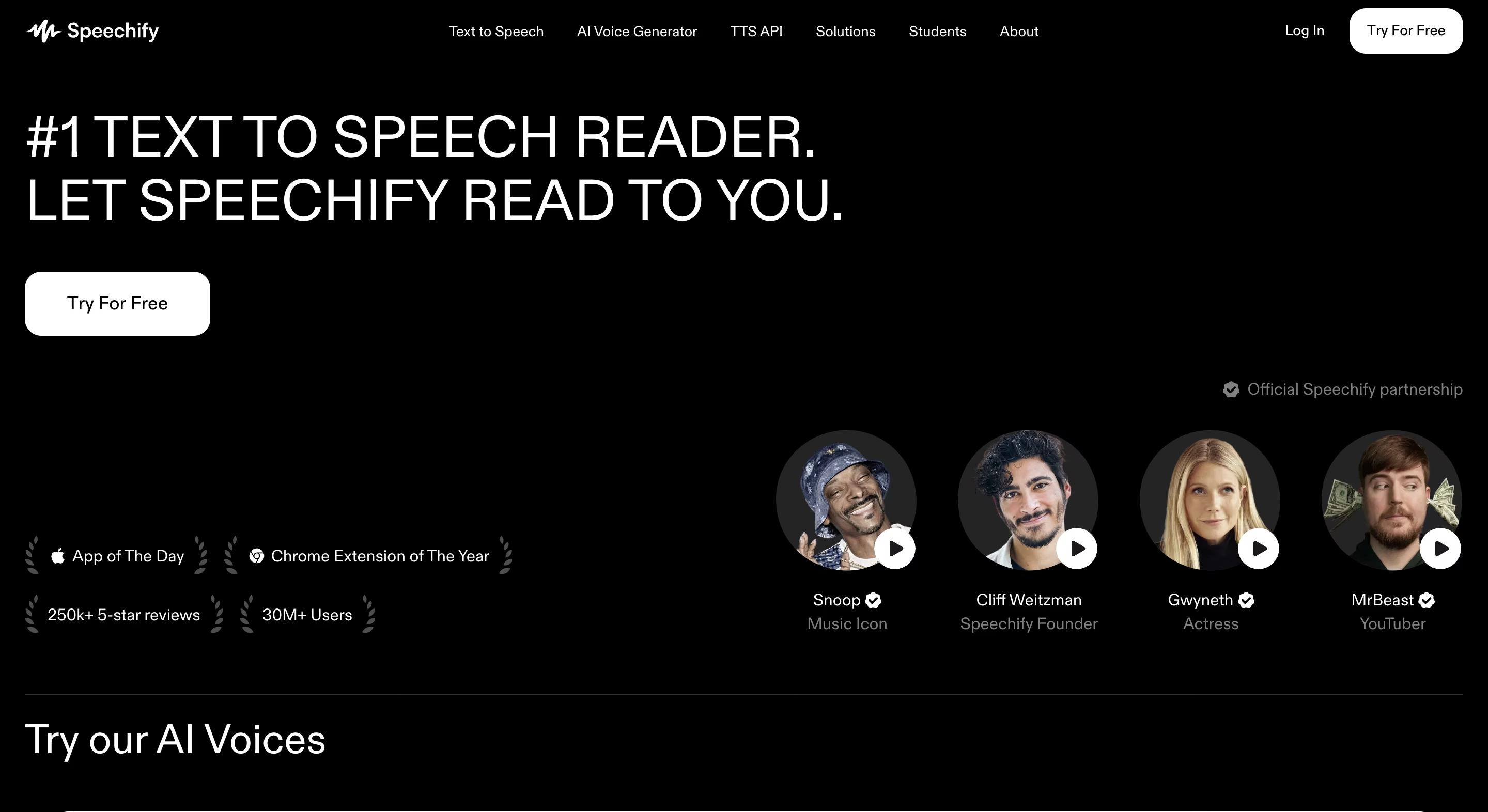
Speechify: Natural Voice Generation Across Devices
Speechify delivers essential text-to-speech capabilities converting written content into natural-sounding audio across multiple languages and device platforms. The system offers 200+ lifelike voice options spanning 60+ languages, making it particularly suitable for multilingual voiceover projects. While the voice quality remains competitive, numerous users report concerns regarding billing transparency and refund process complications that may impact overall customer experience.
Pros:
- Cross-platform compatibility across mobile and desktop devices
- Extensive language support with 60+ options for global projects
- Natural-sounding voice quality for engaging audio content
- Streamlined interface for quick implementation
- Competitive monthly subscription pricing
Cons:
- Customer service issues reported regarding billing disputes
- Limited advanced customization options compared to premium tools
- Occasional sync issues between platforms
- Voice consistency variations between language options
- Restricted export formats for certain subscription tiers
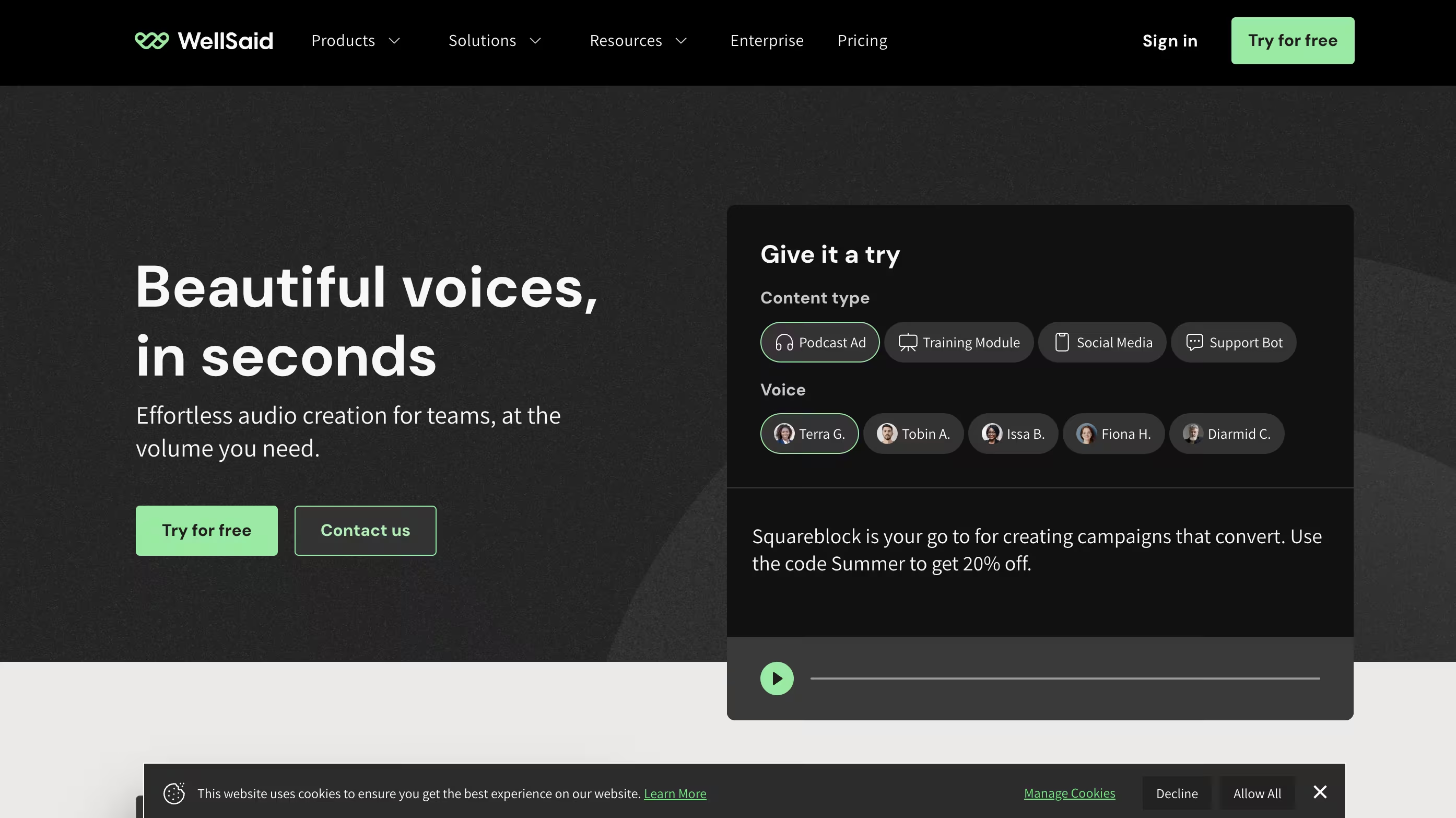
WellSaid Labs: Enterprise Voice Production System
WellSaid Labs features a comprehensive voice library containing 120+ human-like voice options specifically designed for enterprise applications. The platform particularly excels in e-learning and marketing content voice production with professional-grade audio quality and customization possibilities. Despite these advantages, some users encounter challenges with billing clarity and customer support responsiveness, occasionally resulting in unexpected charges requiring resolution.
Pros:
- Enterprise-grade voice quality suitable for professional applications
- Extensive customization options for branded voice experiences
- Specialized voices optimized for educational content
- High-performance API for seamless integration
- Advanced collaboration features for enterprise teams
Cons:
- Premium pricing structure primarily targeting larger organizations
- Steeper learning curve for maximizing advanced features
- Occasional billing transparency issues reported by users
- Limited compatibility with some third-party platforms
- Customer support response times vary with subscription tier
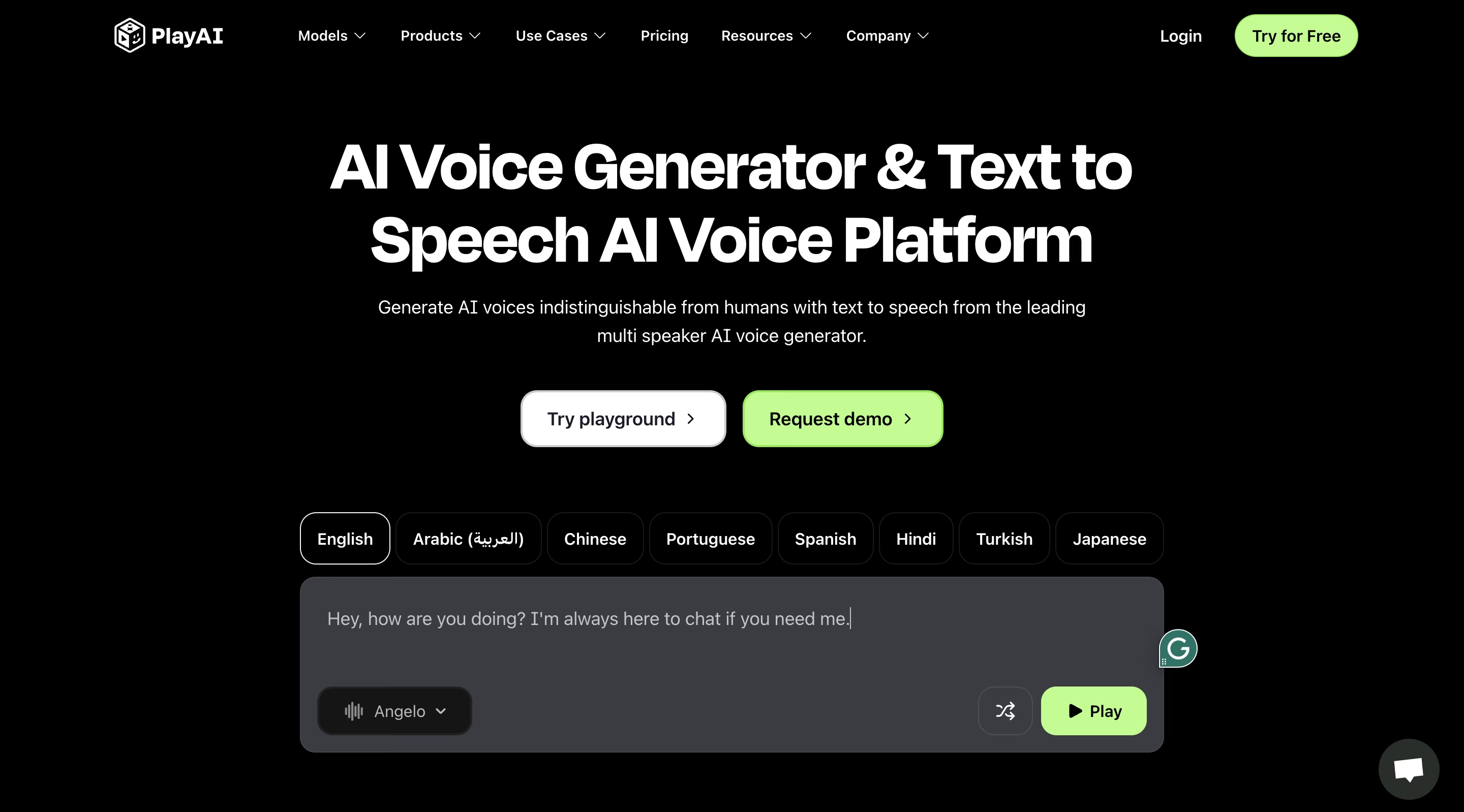
Play.ht: Extensive Language and Accent Coverage
Play.ht offers impressive language diversity with 100+ natural-sounding voices spanning 142 languages and accent variations. The platform includes multiple speech style options, multi-voice capabilities, custom pronunciation controls, and voice inflection adjustments. These features make Play.ht particularly suitable for podcasts, video narration, educational content, and gaming applications. However, some users report occasional quality inconsistencies including unintended breathing sounds, random voice switching, and extraneous word insertions.
Pros:
- Unmatched language and accent diversity with 142 options
- Advanced voice customization including inflection control
- Multi-voice capability for dialogue and conversation creation
- Custom pronunciation dictionary for specialized terminology
- Flexible subscription tiers for different usage requirements
Cons:
- Occasional audio quality inconsistencies between voices
- Random voice switching issues reported in longer content pieces
- Unintended breathing sounds or artifacts in certain voice models
- Processing delays with complex customization requirements
- User interface complexity requiring additional learning time
How Can Content Creators Implement AI Voice Generation Effectively?
Getting started with AI voice generation can significantly enhance voice acting projects through proper implementation strategies. Effective planning and execution maximize synthetic voice technology benefits while minimizing potential limitations.
How Should You Select the Right Tool for Your Voice Needs?
When selecting an AI voice generator, consider critical factors including speech quality, customization options, and cost structure relative to project requirements. Match specific tools to your particular voice needs, whether commercial voiceovers, audiobooks, or character voice work. Effective implementation requires balancing voice quality priorities with budget constraints to ensure optimal solutions for specific content types and audience expectations.
What Best Practices Create Natural-Sounding AI Voice Content?
Creating natural-sounding AI voice content begins with well-structured text accounting for natural pauses and intonation patterns. Select voice models closely matching the intended emotional tone and demographic characteristics for your specific project requirements. Post-processing techniques including pitch adjustment, speed modification, and subtle audio effects application create polished, human-like sound quality minimizing synthetic voice artifacts. Continuous testing with representative audience members ensures optimal voice performance.
Conclusion
The voice acting profession undergoes transformative change driven by advancing AI voice generation technologies and synthetic voice capabilities. While AI-powered text to speech tools deliver increasingly cost-effective and efficient voice production solutions, these systems cannot fully replace the emotional depth and creative interpretation that professional human voice talent provides to demanding projects.
The future of voice acting lies in collaborative approaches where AI voice actors and human performers work together strategically to optimize production efficiency. According to industry projections, speech-based natural language processing technology will reach $28.65 billion market value by 2025, reflecting the growing importance of text to speech tools for content creators across multiple industries. Content producers should embrace these technological changes while selecting appropriate voice solutions based on specific project requirements, audience expectations, and creative objectives.
Frequently Asked Questions
Create an account and sign up for Speaktor. Click “Read Aloud,” paste or upload your document, and select language and voice tone. It will take a few minutes, and your AI-generated voice will be ready to download. You can download the audio file in WAV, MP3, WAV+SRT, and MP3+SRT.
AI voice generation raises complex copyright issues, particularly regarding voice cloning and unauthorized use. Clear regulations are needed to protect both talent and stakeholders.
The best AI voice generator for voice acting is Speaktor. It offers realistic voice tones, supports multiple languages, and provides downloadable audio in WAV and MP3 formats—perfect for creating voiceovers for videos, podcasts, and animations.
Yes. Modern tools like Speaktor use advanced neural networks and natural language processing to create lifelike voices that closely resemble human speech, including tone, pacing, and emotion.
AI voice acting is expanding rapidly and is often used for tasks like training videos, audiobooks, and digital content where speed and affordability are priorities. However, human voice actors remain essential for projects that require emotional nuance, improvisation, or character-driven storytelling.

